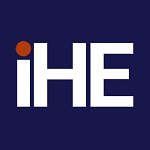No 2016:10: Alternative Payment Models in Haemophilia Treatment
Katarina Steen Carlsson ()
Abstract: In this report, we review existing health care payment models and discuss the implications of applying new models in haemophilia A care. Current payment for factor VIII (FVIII) replacement treatments is usually based on price per international unit (IU), a model that has functioned well for factor products with shared safety and efficacy profiles.Haemophilia A care is emerging from an era of relatively undifferentiated FVIII treatments that have delivered a ‘standard’ profile of treatment burden and expected outcomes and level of protection – as measured by annualized bleed rate (ABR). The entry of extended half-life (EHL), or other longer-acting FVIII products necessitates a departure from this one-size-fits-all payment paradigm. Longer-term, innovations such as monoclonal antibodies and gene therapy will not treat patients by replacing FVIII concentrations, supporting the need to move away from a per-IU-based payment mechanism.
If we focus on the near term, EHL factor concentrates are expected to increase the interval between infusions in prophylaxis regimens and/or reduce the risk of bleeding at current intervals of infusions. Thus, there is a need to explore payment models that support this exciting change in the haemophilia treatment landscape, and lay the groundwork to support future innovation.
The introduction of EHL FVIII products opens up for changes in the current treatment strategy on the aspects of reducing patient burden or improving patient outcomes:• Maintain patient outcomes while reducing patient burden. Product consumption levels (IU/kg/week) would be lower for EHL products; patients would experience less burdensome treatment and yet achieve outcomes on par with current standards.• Improve patient outcomes while maintaining infusion frequency. Consumption levels (IU/kg/week) would remain equal to that of standard-acting FVIII products yet patient outcomes could improve.
Both of these aspects could be implemented as new strategies in a given health care system, or as an individual mix according to patient preferences. The outcome will depend not only on the choice of treatment strategy by the health care provider, but also on the degree of benefit conferred by the new treatment options and patients’ adherence to the prescribed strategy. Treatment adherence is influenced by patient preference, which means that outcomes in real-world settings will be empirical, and therefore may not be readily determined by the clinical trial results.
Imminent changes in treatment options with EHL products compel a need to consider the design of alternative payment models, including requirement for data collection, incentives and benefits to different stakeholders, and terms of payment. While financial risk-sharing models – an agreement between a payer and a manufacturer to share risk in order to advance patient access to the new therapy when the financial exposure is considered unpredictable but high – reduce uncertainty in population costs through budget restrictions and management of sales volumes, they do not explicitly include incentives for increasing patient benefit. They are also not linked to patient outcome, which means they do not require data collection or information beyond what is readily available in sales contracts.
And while a pay-per-patient model is also not outcomes-related, this paper shows such an approach can reduce uncertainty in population costs and increase payers’ budget control. Importantly, this model does allow for patient choice. For example, an EHL product will make it possible for the patient to choose between achieving an improved outcome, a less burdensome treatment, or, to some extent, both.
Two additional models are also explored that are health outcomes-based schemes: one for actual outcomes and one for surrogate measures of outcomes using biomarkers. For these payment models, payment is tied to the value of treatment and requires the collection of real-world outcomes data. Annual outcomes need to be measured, and agreement on a definition of bleeding episode or risk level has to be reached. Requirements of real-world data and agreement on defining “response” could increase the administrative burden, and this needs to be weighed against the value of these tools for optimizing treatment. However, these payment models also include some favourable aspects, i.e. they are linked to performance, and the value includes incentives for health care providers to individualize and optimize dose and frequency of infusions, which could be expected to provide benefit for patients.
Finally, it may be possible to combine features of the proposed models; for instance, a model based on payment per patient could be combined with conditions of achieving a certain quality of the treatment, e.g. low risk for bleeding. The quality of the treatment may be defined as a minimum threshold FVIII level that should be attained, e.g. 1% FVIII. If the manufacturer and the payer agree on a fixed cost for FVIII, there is potential to provide patients with both health benefit and a less burdensome treatment regimen according to patient preference.
This report was commissioned and funded by Bayer.
Keywords: Haemophilia Treatment 2016
Full text files
IHE-Report-2016_10_.pdf
Questions (including download problems) about the papers in this series should be directed to Annette Persson Dietmann ()
Report other problems with accessing this service to Sune Karlsson ().
RePEc:hhs:ihewps:2016_010This page generated on 2024-09-13 22:15:23.

